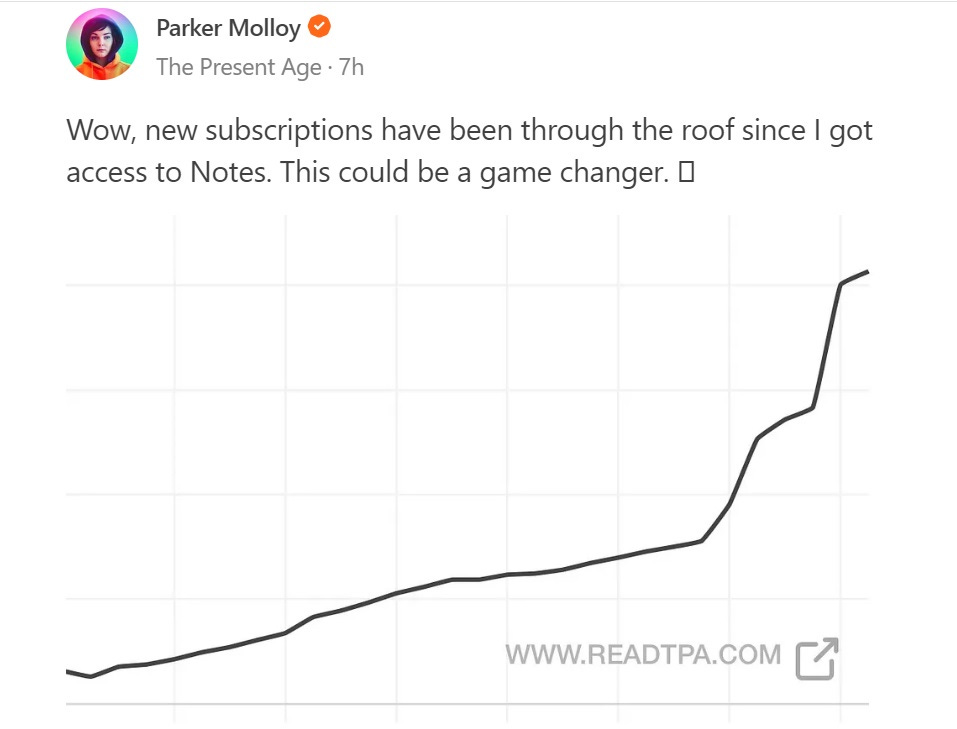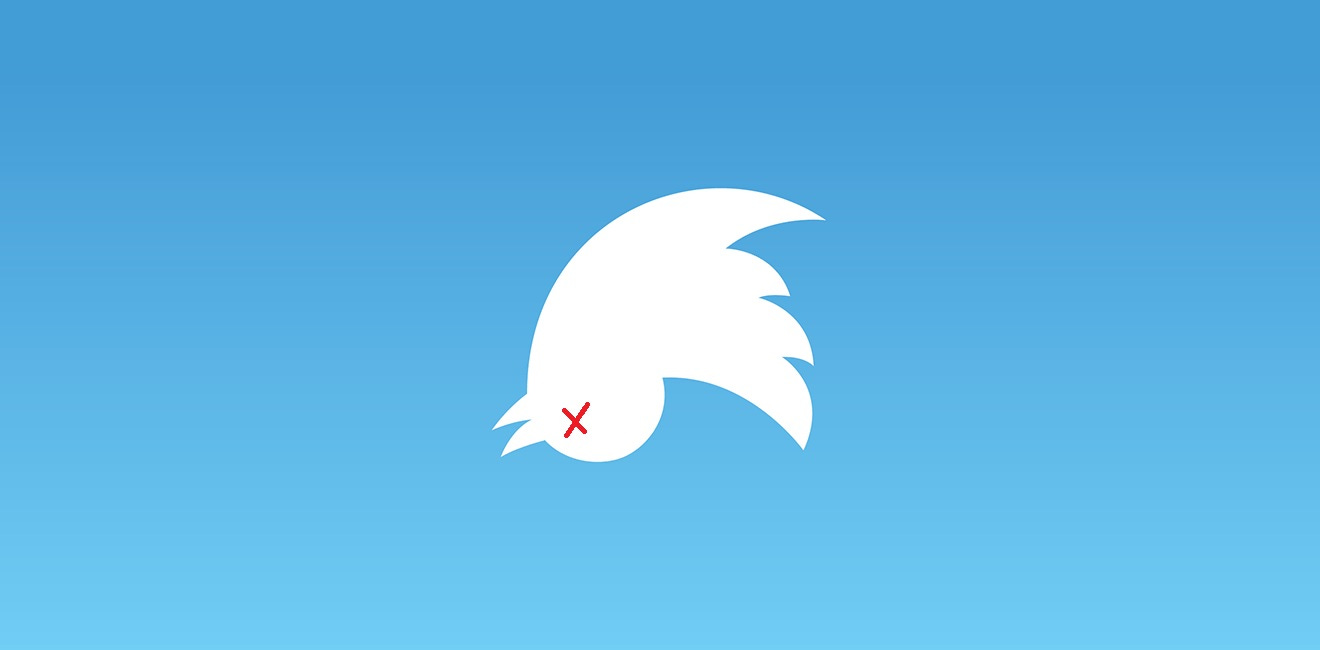Substack Notes could be the Twitter killer we've been waiting for
PLUS: How to monetize with online courses
Welcome! I'm Simon Owens and this is my media newsletter. You can subscribe by clicking on this handy little button:
Let’s jump into it…
Substack Notes could be the Twitter killer we've been waiting for
Ever since he acquired Twitter last year, Elon Musk has shown himself to be a capricious owner with the willingness to upend long-established norms at the drop of a hat. But even for him, his actions last week were particularly erratic and shocking.
Shortly after Substack announced Notes, a Twitter-like platform that allows its users to post shortform content, Musk rolled out a series of updates that increasingly throttled users’ access to Substack. First, he disabled Substack’s use of the Twitter API, and then he made it incredibly difficult for users to share and engage with tweets that linked to Substack content. Musk issued a few mealy-mouthed excuses for the moves — including a lie that Substack was abusing its API access — but in reality he was simply trying to hinder the growth of a potential competitor. Luckily, the outcry against his actions was so swift and loud that he quickly reversed course, and now Twitter users are free to engage with Substack content once again.
The reason that so many people found Musk’s moves so galling was that they were such a direct attack on writers’ ability to earn a living. For the entirety of its existence, Twitter had done virtually nothing to directly compensate creators for the content they contribute; instead, those creators justified their addiction with the notion that the platform helped them amass a loyal audience that they could then monetize elsewhere. By blocking Substack, one of the largest content monetization platforms on the internet, Musk undermined Twitter’s core proposition. It was such a monumental betrayal that several writers — including me — vowed to never post original content to Twitter ever again.
But this still begs the question: was Musk right to be afraid of Substack Notes? After all, Twitter’s been surprisingly effective at keeping most of its power users despite the fact that many of them hate its owner. Casey Newton made a good case the other day for why journalists in particular can’t seem to quit the platform despite the availability of several copycat social networks. Is there anything about Substack Notes that’s uniquely threatening?
I think there is. In fact, I believe Notes has the potential to be the Twitter killer that so many Musk haters have been waiting for, and that it addresses the weaknesses that have kept all the other Twitter copycats from achieving mainstream adoption.
Why other Twitter competitors failed
What are those weaknesses? Well, of all the Twitter competitors to emerge in recent years, Mastodon and Post have seemed to gain the most traction. While Mastodon does have a fervent and loyal user base, its decentralized framework makes the platform difficult to scale to the level that would make it a true Twitter killer. Its UI is clunky and the onboarding process is truly atrocious. It’s a great platform for power users, but I doubt it will ever attract the casual user base that can propel a social network into the mainstream.
Post, on the other hand, has a really elegant design — in some ways superior to Twitter’s — and in its early days I thought it had a real shot at becoming the de facto landing spot for Twitter defectors. But in the six months or so since I’ve joined, it’s been extremely slow to launch new features and still doesn’t even have a halfway decent notifications functionality.
What’s more, it doesn’t really differentiate itself from Twitter. Say what you will about hating Musk, it’s still a huge pain in the ass to migrate your entire following from one platform to the other. Post doesn’t have extra features that would incentivize creators to pick it over other platforms. It’s slowly rolling out micropayments tools that would allow writers to paywall their content, but I and others remain extremely doubtful that micropayments as a business model will ever catch on.
The rise of Substack Notes
So why do I think Notes has a chance of cannibalizing a large chunk of Twitter’s user base? Well, for starters, Substack already has a large network of creators who are engaged on the platform. If you look at the Substack leaderboard for any major content category, then you’ll find a list of writers who collectively have tens of millions of followers on Twitter. Substack’s founders have openly admitted that their early strategy for luring writers involved approaching Twitter users with the highest level of engagement. So unlike with Mastodon and Post, Twitter’s power users are already endemic to the Substack platform from day one.
But what’s more, I think Notes is perfectly aligned with creators’ incentives to make money. Back in October of last year I wrote a widely circulated piece titled “Substack found its unfair advantage.” That advantage was the platform’s Recommendations tool, which introduced network effects to an otherwise decentralized medium. Prior to Substack’s launch of Recommendations, writers had every incentive to ditch the platform the very moment that they reached critical success; otherwise they ended up wasting money on Substack’s 10% revenue share when other competing platforms charged much less for the same services.
Substack Recommendations turned the platform into a growth engine that turbocharged subscriber acquisition. Suddenly, the price of leaving Substack meant sacrificing that growth engine, which meant that its 10% revenue cut seemed much more reasonable. According to my own dashboard, the Recommendations tool has driven over 10,000 signups to my newsletter in less than a year.
Substack Notes represents a huge leap forward in enhancing those network effects. Before its launch, Substack only served as a platform for longform content — i.e., newsletters — which meant that creators still needed to turn to outside networks for posting their shortform content. Now, the two mediums have merged in such a way that will ultimately benefit creators. After all, when someone subscribes to my Substack Notes, they also become subscribers to my newsletter. That requires a lot less friction than trying to lure my Twitter followers over to my newsletter signup page. In just the two days since Notes launched, several writers have reported that they’ve seen their biggest jump in subscribers since joining Substack. I’ve noticed a significant bump as well.

Meanwhile, Musk remains absolutely clueless as to what compels creators to produce content. While he’s been touting supposed creator monetization features for months, none have actually materialized. Instead, he’s been busy trying to convert those creators into paid subscribers, often by pulling once-free features behind the paywall. So far, not many outside his core fanbase are actually buying.
Back in November, I wrote that “Twitter has never understood the Creator Economy.” My core thesis was simple: “The real incentive that keeps creators glued to any particular platform is its ability to help them make money.” Musk’s predecessors didn’t realize this and he doesn’t understand it either. Thus far, he’s been lucky that Twitter as a platform remained so sticky, but I think with the launch of Substack Notes his luck is finally about to run out.
What do you think?
How to monetize with online courses
While paid subscription models have been all the rage for the last decade, more and more creators are turning to online courses as a way to monetize their audiences. Their evergreen nature makes them ideal for generating passive income, and many creators have succeeded at selling them at relatively high price points.
But what’s the best way to develop a course that your audience will actually want? And how do you market it to that audience?
I recently convened a panel of professional course creators to answer these questions. We talked about everything from identifying course topics to setting prices to choosing the best platform to host your course.
You can watch our conversation in the video embedded below:
If video embeds don’t work in your inbox, go here.
Want to reach my audience of media operators, creators, marketers, and tech executives?
Head over to my sponsorships page to find out out how.
Quick hits
Given what happened on this week's episode of Succession, it's perfect timing for Vanity Fair to go deep on the Murdoch media empire and its own bumpy road toward naming a successor. [Vanity Fair]
"I think it’s safe to assume Lenny is pulling in a bare minimum of $4 million per year from his newsletter, podcast, and job board alone." This is a great deep dive into one of the most successful newsletters on Substack. [Growth in Reverse]
"LinkedIn traffic isn’t as consistent as that for our other newsletters." I remain pretty skeptical of LinkedIn newsletters given that you aren't given access to your email list or basic stats like open rates. But at the same time, LinkedIn is pushing newsletters hard and some publishers are seeing high engagement on them. [Mapping Journalism]
Conde Nast is continuing to centralize its operations in a way that's made the company much more efficient. It's definitely one of the legacy media success stories in terms of its pivot to digital. [Press Gazette]
I'm extremely skeptical that we'll ever see another general news app reach mainstream adoption, especially since both Apple and Google have integrated their news apps into their mobile OS. There's just not enough differentiation in this space to break through. [Bloomberg]
ICYMI: How two graduate students launched the leading biotech publisher in Europe
Co-founder Joachim Eeckhout explains how Labiotech.eu filled an information gap for Europe's fast-growing biotech scene.
Do you like this newsletter?
Then you should subscribe here:
Simon Owens is a tech and media journalist living in Washington, DC. Follow him on Twitter, Facebook, or LinkedIn. Email him at simonowens@gmail.com. For a full bio, go here.


I’m not so sure. Some of us want to write notes but not be subscribed to 1000 Substack newsletters. Plus it needs to be able to split stuff into lists. That was a handy feature on Twitter.
With seemingly every new feature or "upgrade" Substack moves beyond its core competency. Notes is a social step too far and will go the way of Clubhouse.